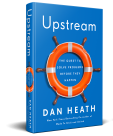If you have a burning interest in the correlation between health and education, you are a nobler, higher-minded person than me. But notice how Gina Kolata, in the NYT, grabs our attention:
It was 1999 and a Columbia University graduate student, Adriana Lleras-Muney, was casting about for a topic for her doctoral dissertation in economics. She found an idea in a paper published in 1969. Three economists noted the correlation between education and health and gave some advice: If you want to improve health, you will get more return by investing in education than by investing in medical care.
It had been an inflammatory statement, Dr. Lleras-Muney says. And for good reason. It could only be true if education in and of itself caused good health.
But there were at least two other possibilities.
Maybe sick children did not go to school, or dropped out early because they were ill. Or maybe education was a proxy for wealth, and it was wealth that led to health. It could be that richer parents who gave their children everything, including better nutrition, better medical care and a better education, had children who, by virtue of being wealthy, lived longer.
How, she asked herself, could she sort out causes and effects? It was the chicken-and-egg problem that plagues such research.
The answer came one day when Dr. Lleras-Muney was reading another economics paper. It indicated that about 100 years ago, different states started passing laws forcing children to go to school for longer periods. She knew what to do.
â??The idea was, when a state changed compulsory schooling from, say, six years to seven years, would the people who were forced to go to school for six years live as long as the people the next year who had to go for seven years,â? Dr. Lleras-Muney asked.
All she would have to do was to go back and find the laws in the different states and then use data from the census to find out how long people lived before and after the law in each state was changed.
â??I was very excited for about three seconds,â? she says. Then she realized how onerous it could be to comb through the state archives.
Notice what Kolata is doing here: First, she “primes the pump” — she gives us a tidbit of information about the potential link between education and health care. Then, she sets up the key mystery: How can you tease out the effects of education (on health) from other variables? Then, she gives us the revelation (unfurled slowly, so that we have a moment of snap-insight like the researcher) that THE RIGHT DATA EXISTS! And finally, before we get too comfortable, she tells us that the research task is going to be onerous…
This is good writing, but not just good writing. It is a great example of how to structure and sequence ideas to build interest. There is a little dash of Grisham in this piece. Kolata is building a “knowledge gap,” a term coined by the behavioral economist George Loewenstein. Loewenstein said that when people point out gaps in our knowledge, it actually causes us discomfort, like an itch that we want to scratch. (See the “Unexpected” chapter of the book.) Kolata is luring us along by telling us just enough to make us want the answer to something, then giving us the answer (almost), then setting up another mystery, etc.
If Kolata can do this for health care correlations, you should be pretty confident about your ability to do it with your own ideas.



